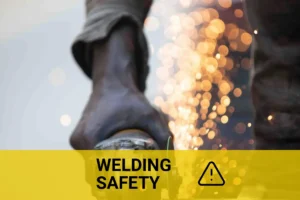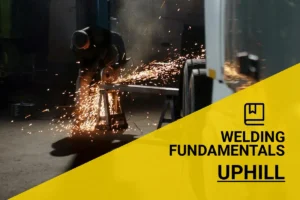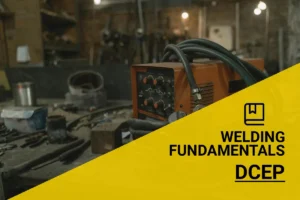What is a Butt Weld? Understanding Types, Steps, and Applications
Published on: March 30, 2025 | Last modified: March 4, 2025
By: Joe Carter
A butt weld is a type of joint where two pieces of metal meet edge to edge. This method creates a strong connection that’s widely used in various welding applications.
You may ask, what is a butt weld? It’s crucial to know because a solid understanding can elevate your welding skills. From my own experience, mastering this technique has made my projects more reliable and stronger, reducing my need for repairs later.
In this guide, we’ll dive into what butt welds are, how they work, different types of butt welds, steps for creating a butt weld, factors affecting the quality, common issues, inspection tips, applications, and even alternative joining methods. You’ll learn how to weld butt joints and how to use butt welding clamps efficiently.
Contents
- What is a Butt Weld?
- How Does a Butt Weld Work?
- Types Of Butt Welds
- Steps for Creating a Butt Weld
- Common Issues and Troubleshooting
- Factors Impacting Butt Welding Quality
- Aftercare, Inspection, and Advanced Tips for Butt Welds
- Applications Of Butt Welds
- Advantages of Using Butt Welds
- Other Options You Can Consider
- Frequently Asked Questions (FAQs)
- Conclusion
- References
What is a Butt Weld?
A butt weld joins two pieces of material edge to edge, creating a strong connection. This method is common in pipelines, construction, and automotive projects due to its efficiency and strength. It’s your go-to for seamless joints. Discover more techniques on edge joint welding for versatile applications.
How Does a Butt Weld Work?
A butt weld is a joint where two pieces of material, typically metal, are joined end to end. This welding method aligns the edges and heats them until they melt together, usually using an electric arc or gas flame. A good butt weld can achieve about 70-80% of the base metal’s tensile strength. This weld is common in various applications, such as plumbing and construction—especially for butt welding pipes with diameters over 5 mm (0.197 Inches).
To perform a butt weld properly, you need deep penetration. Expertise is essential, as you typically use either arc welding or MIG (Metal Inert Gas) welding techniques. Each method has its specifics, but all focus on merging materials at the joint.
Here’s how to execute a solid butt weld: clean the edges thoroughly to remove contaminants. Then, position the pieces accurately using butt welding clamps for stability. Understanding the type of butt joint welding is crucial—for instance, knowing the difference between fillet and butt welds can significantly affect the outcome.
Types Of Butt Welds
What are the types of butt welds?
-
Fillet Butt Welds
Fillet butt welds join two pieces at right angles. They’re used mainly for structural connections. To make this type, prep the edges and apply filler material to fill the gap between both pieces. Proper setup of equipment is crucial for effective welds, and you may find it beneficial to know how to set up a Lincoln Electric welder.
-
Groove Butt Welds
Groove butt welds fit two sheets together in a V-shape, ideal for thicker materials. To create them, cut grooves into the edges of both pieces, then weld along the root of the groove for a strong bond. A welding machine employs electric currents to join metals effectively, which is vital for understanding how a welding machine works.
-
Square Butt Welds
Square butt welds join pieces with flat edges aligned together. These welds have a simple design. To execute this, align the flat edges and weld across the joint, ensuring full penetration for strength.
-
Bevel Butt Welds
Bevel butt welds feature beveled edges, making it easier to join thicker materials. These welds create a deep groove. To perform this type, bevel the edges to an angle, then weld around the joint for maximum support. Understanding the basic types of welding joints is essential for achieving optimal weld strength and effectiveness.
-
V-butt Welds
V-butt welds have a V-shaped bevel on the edges of the metals being joined. They’re ideal for thicker metals. To make this weld, align the edges at a V-angle and apply heat along the joint for a solid connection. Successfully mastering these techniques involves understanding various welding nuances like welding thin metal effectively.
You should now have a good understanding of the different kinds of butt welds. In the next part, we’ll discuss the process for creating a butt weld.
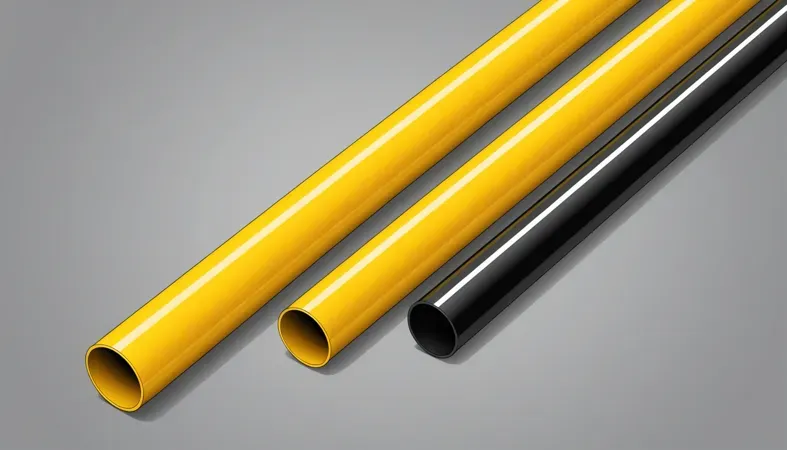
Steps for Creating a Butt Weld
Here are the steps to perform a butt weld effectively.
-
Preparation Of Surfaces
Clean both surfaces to be welded. Use a grinder or wire brush to remove rust, paint, or other contaminants. Achieve a smooth, clean finish across at least 2 inches (5 Cm) of the edges. Cleanliness is crucial; any debris can lead to weak welds.
-
Alignment Of Workpieces
Align the pieces accurately. Ensure the edges are flush and within a gap of 1/16 inch (1.6 Mm) for optimal penetration. Use clamps to hold them securely; if they shift during welding, you might end up with a messy joint. Investing in good clamps saves time and effort.
-
Selection Of Welding Method
Choose the appropriate welding technique. MIG and TIG welding are popular for their clean finishes. For MIG, a suitable wire diameter is about 0.030 inch (0.76 Mm) for most mild steel. If you’re unsure, go with MIG; it’s user-friendly and versatile for various materials.
-
Application Of Welding Technique
Begin welding with the chosen method. For MIG, start with a voltage of around 18-20 volts (V) for a 0.030-inch wire. Move steadily along the joint at about 8 inches (20 Cm) per minute for maximum penetration. A slow, steady hand yields the best results.
-
Cooling and Finishing
Allow the weld to cool naturally to avoid warping. You can speed up cooling with a fan, but don’t quench it in water. Once cool, grind any excess weld for a smooth finish if needed. Aim for a nice, even surface; this not only looks clean but often makes future welds easier. Consider exploring options for welding thickness with a Lincoln 140 welder to ensure optimal results.
We have now covered the steps for creating a butt weld. Next, we will examine common issues and troubleshooting.
Common Issues and Troubleshooting
Now, let’s look at the specific problems that arise with butt welds.
-
Porosity in Welds
Butt welds can exhibit porosity from trapped gases. Look for small holes in the weld. To fix this, ensure proper cleaning of materials and use the correct shielding gas.
-
Weak Weld Joints
Butt welds may be weak if the parameters aren’t right. Check the voltage, amperage, and travel speed during welding. Adjust these for strong fusion.
-
Cracking in Welded Areas
Butt welds might crack due to thermal stresses. Identify cracks through visual inspection. To resolve this, control the cooling rate and consider preheating the material before welding.
-
Inconsistent Weld Appearance
Butt welds can have an uneven finish. Look for variations in bead width and surface texture. To fix this, maintain a steady hand and appropriate speed while welding.
You should now have a good understanding of common issues and their solutions. In the next part, we’ll discuss factors affecting butt welding quality.
Factors Impacting Butt Welding Quality
What factors affect the quality of a weld connection?
-
Material Thickness
Material thickness affects the heat required for welding. For instance, 1/8 inch (3.2 Mm) steel needs less heat than 1/2 inch (12.7 Mm) steel. Thicker materials require more heat and must cool evenly to avoid cracking.
-
Welding Process Used
Different welding processes significantly impact butt weld quality. Processes like MIG and TIG have unique heat inputs and filler materials, affecting penetration and joint strength.
-
Heat Input Parameters
Heat input is critical for proper fusion in a butt weld. Maintain a balance between travel speed and amperage. Excessive heat can cause distortion, while insufficient heat results in weak welds.
-
Joint Design
A well-designed joint promotes consistency in butt welding. Using backsplats or bevels helps achieve better fusion and strength, especially with thick materials or critical structures.
-
Welder Skill Level
The welder’s skill level directly influences butt weld outcomes. An experienced welder can adjust settings based on material and process, reducing imperfections.
We have now covered factors affecting butt welding quality. Next, we will examine aftercare, inspection, and advanced butt welding tips.
Aftercare, Inspection, and Advanced Tips for Butt Welds
Here’s essential advice on caring for your butt weld, inspecting it, and advanced techniques for experienced welders.
Aftercare Tips
After creating a butt weld, clean the area with a wire brush and a solvent like acetone. Keep the weld area below 80°F (27°C) to prevent warping, especially in materials like aluminum. Maintain a protective coating, such as zinc chromate spray, to prevent long-term corrosion. Selecting the appropriate gas is crucial in welding to improve weld quality and stability, and you can explore what gas is used for welding to ensure optimal results.
Inspection
Inspect the weld for cracks or undercuts using a magnetic particle or liquid dye penetrant method. Look for gaps exceeding 1/16 inch (1.6 Mm) that can lead to failure. I once used the Magnaflux kit for reliable inspection; it clearly revealed any issues.
Expert Tips
Adjust your travel speed based on the thickness: slow down for 3/8 inch (9.5 mm) metals for proper heat distribution. Use pool control techniques to ensure fusion along the edges. I recommend using a TIG torch with adjustable amperage settings for welding guidance during fine control while welding.
To improve visibility and precision during the welding process, consider exploring ways to enhance vision.
Applications Of Butt Welds
I’ve seen butt welds used in various tasks, and they have many applications, such as:
- Pipelines: Used to join large-diameter pipes, they ensure a leak-proof seal for transporting oil or gas. They’re a common choice due to their strength and reliability.
- Automotive Frames: In vehicle assembly, butt welds provide a sturdy connection for frame components, enhancing strength while minimizing weight.
- Heavy Equipment: In machinery like bulldozers, butt welds secure critical structural joints, vital for handling extreme loads in rough terrain. Their use boosts durability.
- Shipbuilding: Used to connect thick steel plates in hull construction, butt welds are essential for providing strength against high pressures in the marine environment.
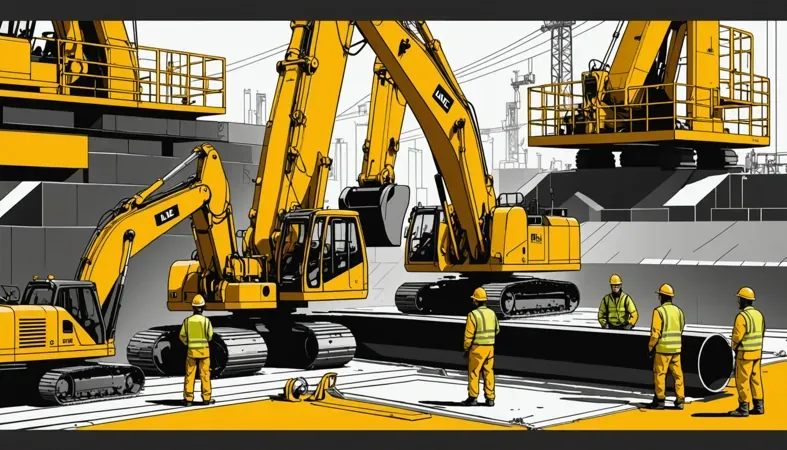
Advantages of Using Butt Welds
Butt welds offer several benefits in various applications. Here’s a closer look at what makes them a go-to choice for many welders.
| Advantage | Description | Applications |
|---|---|---|
| High Strength | Butt weld connections provide up to 80% strength of the base metal. This ensures durability in demanding environments. | Pipelines, Automotive Frames |
| Smooth Surface Finishes | These welds create a smooth surface, ideal for structures needing aesthetic appearance or easy paint application. | Architectural Projects |
| Versatility | Butt welding is suitable for various materials including steel, aluminum, and other alloys, making it incredibly adaptable. | Manufacturing, Heavy Equipment |
| Reduced Weight | Creating strong connections without excessive materials helps lower the overall weight of structures. | Aerospace, Automotive |
| Minimal Distortion | Properly executed butt welds minimize thermal distortion, preserving the integrity of the overall piece. | Precision Engineering |
Other Options You Can Consider
When you’re looking to achieve similar results as a butt weld, consider using a fillet weld or a socket weld. These methods can be preferred when working in tight spaces or with thinner materials, like pipes. Equipment such as a MIG welder or TIG welder, known for precision, can help you get cleaner seams in these scenarios.
One thing I’ve come to realize is that sometimes, choosing a different welding method can save you time and material. For example, using a spot welder can be effective for thin sheet metal when durability isn’t compromised. Understanding welding fundamentals can make your project more efficient without skimping on quality.
Submerged arc welding is a method that provides deep weld penetration and is ideal for high-quality, large-scale manufacturing processes. To learn more about submerged arc welding techniques, consider how it fits into your project needs.
Frequently Asked Questions (FAQs)
Now let us look at some common questions I typically get asked about butt welding.
What is Butt Joint Welding?
Butt joint welding refers to the process of joining two pieces of metal end-to-end. This method creates a strong bond, allowing for full cross-sectional strength. Commonly used in ships and bridges, butt joint welding can handle high-stress environments.
How to Weld Butt Joints?
Welding butt joints requires specific techniques for a quality weld. You need clean edges, proper alignment, and often a backing bar. Using the right electrode and voltage settings can prevent defects, ensuring a strong and reliable joint.
How to Use Butt Welding Clamps?
Using butt welding clamps helps secure your metal pieces for accurate welding. Position the clamps at the joint to hold the edges tightly together. This minimizes movement, allowing for cleaner, more consistent welds.
How to Butt Weld Sheet Metal?
Butt welding sheet metal involves aligning the sheets edge-to-edge before welding. Select appropriate amperage based on metal thickness. Generally, thin metal requires lower amperage, around 40-60 A (Amps), to avoid burn-through.
How to Butt Weld Pipe?
Butt welding pipe means joining two pipe ends directly together. Use a bevel to prepare the edges for welding. Ensure both surfaces are clean and fit snugly to minimize gaps – this prevents weak joints during high pressure.
Mastering the fundamental techniques is crucial if you are learning how to operate welding equipment safely. Discover essential steps on how to make a welder effectively.
What is a Butt Joint in Welding?
A butt joint in welding is when two metal pieces are aligned level with each other. This joint type creates strong connections suitable for many applications, including structural steel and pressure vessels.
Conclusion
We covered what a butt weld is, how it works, different types of butt welds, steps for creating a butt weld, factors affecting weld quality, common issues, and troubleshooting. We also looked at aftercare, inspection, advanced tips for butt welds, and applications. Finally, we explored other options and answered some frequently asked questions.
So, what is a butt weld? Simply put, it’s when two pieces of metal are joined together at their edges, creating a seamless bond. This technique is often used in pipelines, structures, and even sheet metal, making it essential for durability and strength in various applications.
To further enhance your welding knowledge and find additional insights, be sure to check out What is Welding.
References
- American Society of Mechanical Engineers. (2019). ASME Section IX: Welding and Brazing Qualifications. New York, NY: ASME.
- Blodgett, O. W. (1996). Design of Welded Structures. Cleveland, OH: James F. Lincoln Arc Welding Foundation.
- American Welding Society. (2020). AWS A3.0: Standard Welding Terms and Definitions. Miami, FL: AWS.
Joe Carter is a retired welding professional with over 40 years of hands-on experience in the industry, spanning ship repair, structural welding, and even underwater projects. Joe is a master of MIG, TIG, and Stick welding. Passionate about mentoring the next generation of welders, Joe now shares his decades of expertise and practical insights to help others build rewarding careers in welding.
American Welding Society, Butt Weld, Butt Weld Types, Joint Connections, Welding, Welding Applications, Welding Equipment, Welding Quality, Welding Techniques, Wire Diameter




